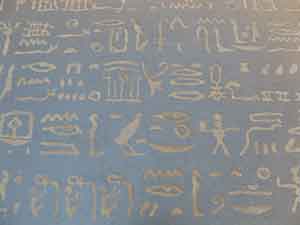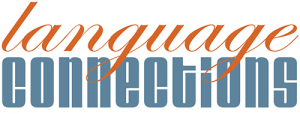One of the most important catalysts in helping to understand how ancient societies interacted is the process of translation. As studying the history of translation allows scholars to learn more about how translation has left its imprint on the world, the translation industry today has grown to new heights. With today’s translation market exceeding $30 billion in net worth, the need for translation remains higher than ever.
The History of Translation and Its Impact
Translation services have had a remarkable impact on the world, as the practice gives people the opportunity to understand the meaning of several languages. Consequently, studying the history of translation has allowed society to learn a lot about cultures and civilizations that existed many centuries ago.
While translation services are sometimes used interchangeably with interpreting services, translation involves converting a source language from written text, while interpretation requires doing so orally.
Learning about the history of translation has enabled scholars to understand a lot about ancient cultures – and even today translation history can teach us a lot about civilizations that have long since passed. Without the impact made by linguists working throughout the history of translation, we would not be able to comprehend the contextual meanings that exist in a diverse amount of historical scripts.
Some of The Early History of Translation
Translation services were very common throughout Ancient societies in the Middle East, and the abundance of languages between ancient kingdoms developed the need for people to communicate through language barriers. At around 2500 BC, clay tablets were used to decipher symbols from Sumerian and Eblaite, which were ancient Semitic languages.

Among the most famous translators to work on translating Egyptian hieroglyphics from the Rosetta Stone was French scholar Jean-François Champollion. Champollion successfully translated a decree that was inscribed on the stone in 3 different scripts – Egyptian hieroglyphics, Demotic script, and Ancient Greek.
He also identified that not all of the hieroglyphics were alphabetic, and that some symbols were in fact representations of ideas and previous nouns.
Translations of the Bible
Scholars have been attempting to produce translations of the Bible for a number of centuries. For instance, one of the earliest examples from the history of translation was when the Old Testament was translated from Hebrew into Greek during the 3rd century BC.

When the Gutenberg printing press was invented in the 15th century, this gave way for the mass production of copies of the Bible. Martin Luther, a German monk, took advantage of this and produced a German translation of the New Testament in 1522. Luther then assembled a team of translators to create a German translation of the Old Testament, which took until 1534 to publish.
This German translation of the Bible became known as the Luther Bible. While translating the scripture, Luther realized that a lot of expressions written in Hebrew would not have the same literal meaning in German, so he had to select words that most aptly fit the usage of the original Hebrew script. Luther also found that many of the Catholic Church’s teachings did not coincide with the teachings of scripture.
The most significant aspect of the Luther Bible was that it marked the first time people from outside the clergy were given access to the Bible. Previously, the Bible had only existed in its original Hebrew script, known exclusively to members of the clergy. Later, Luther’s revolutionary ideas against the Catholic Church would eventually disperse throughout Europe, ultimately repudiating the establishment.
Famous Translators in Translation History
The profession of translating has consequently been crucial in the comprehension of historical documents and texts. However, at times this was known to be a historically dangerous job, such as with the case of William Tyndale. Tyndale was a famous English translator and scholar, who was executed in 1536 in Holland due to his efforts to translate the Bible into English.
Other notable translators, albeit those who led a less dangerous life, include Constance Garnett, who was one of the first translators to decipher several literary classics from Russian into English, and Gregory Rabassa, who translated several Latin texts into English during the 20th century.
The Modern Day Translation Industry

Because the demand for translation services is so high, there are many translation agencies (otherwise known as Language Service Providers) competing for large market shares. The translation industry includes companies from all over the world, and the approximate worth of this industry is valued at over $33.5 billion.
European agencies make up just over 49% of the revenue from the translation industry, while North American and Asian agencies account for almost 35% and 13% of revenue, respectively. Oceania is responsible for just 2% of the translation industry revenue, and Latin America and Africa each account for less than 1% of total revenue.
Composition of The Translation Industry
The translation industry has several important players that comprise its structure. Generally, at the top of this industry are the Language Service Providers (LSPs). LSPs are agencies that employ both a network of translators as well as in-house translators to conduct language services for consumers.
Sometimes translation agencies may delegate certain translation assignments to smaller agencies, and at times those smaller agencies will commission tasks for freelance translators.
A freelance translator is a translator who works independently from agencies, and has the option to reject some tasks. Freelance translators have more adaptability than in-house translators, since they do not have a set working schedule.
Translation Costs

Agencies usually price their translation services at a range of $0.08 to $0.28 per source word. This cost range is common when clients order a TEP translation, also known as translating, editing and proofreading.
Average translation rates per word for common languages are listed below:
- English to Latin American Spanish: $0.10
- English to Japanese, Korean: $0.16 to $0.21
- German, French, Spanish to English: $0.14 to $0.18
- English to Icelandic, Swedish, Danish, Norwegian, Finnish: $0.17 to $0.28
- English to German, Dutch, French, Italian: $0.14 to $0.19
Once again, it is important to keep in mind that these numbers are not set. The price per word of your translation will depend on the industry, technicality of the language, the rarity of the language, the size of the project, the amount of repetitions in the document and more.
Usually the best way to determine the cost of your translation is to send whatever documents you can to a Language Service Provider (or freelancer if you are contracting one) and have them perform a word count and review.
Translation Moving Into the Future
Although the history of translation spans multitudes of centuries, a lot can be learned about the development of previous civilizations because of it. Translation has been a powerful tool in helping to bridge the gap between cultural barriers, and this remains true even to this day.
For thousands of years people have been demanding translation services to facilitate business, idea sharing, and to increase their cultural understanding of the world.
The written word allows society to express multitudes of opinions, ideas and insights. Being able to understand these expressions remains a fundamental right. Translation also serves as a crucial tool in helping to understand history as well, as the work of scholars such as Jean-François Champollion has afforded society the opportunity to learn much about ancient civilizations.
As we look to the future we can expect to see translation entering more and more into the technical age – with Machine Translation and Neural Networks such as those possessed by Google’s Translator, and in-ear interpreters such as the Pilot. Though there is an underlying fear that human translators may one day be replaced by machines, that day is still far in the future.
All in all, the global market for translation services will continue to grow as the world continues to globalize. Consequently, instead of fading into ancient history, the translation industry will remain essential in helping society stay connected.
About Language Connections:
Language Connections is one of the top language service companies in the US. Over the last 30 years, we’ve focused on providing the best business translation services, interpreting services, as well as interpreter training and customized language training programs. In addition to top-tier corporate language training, we offer certified corporate interpreters and professional business translation services in 200+ languages. Our network includes linguists with backgrounds in all major industries. They’re ready to meet your needs, whether they’re for technical translation services, legal translation, government translation services, international development translation services, education translation services, life sciences translation, or something else. Reach out to us today for a free quote on our cost-efficient and timely translation services, interpreters, or other linguistic services.
Language Connections Inc.
2001 Beacon Street, Suite 105,
Boston, MA 02135
Phone: +1-617-731-3510
Email: service@languageconnections.com


